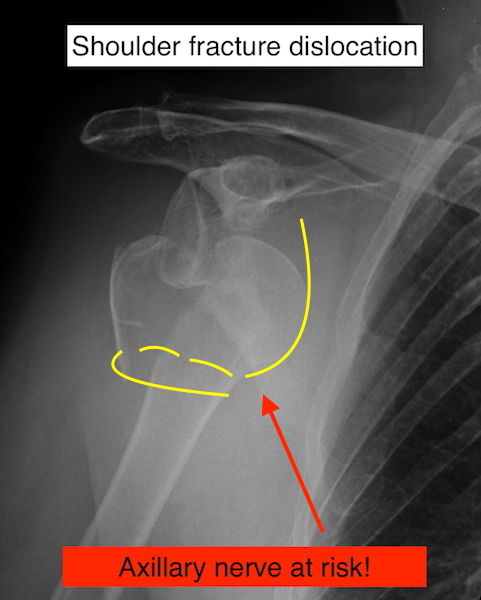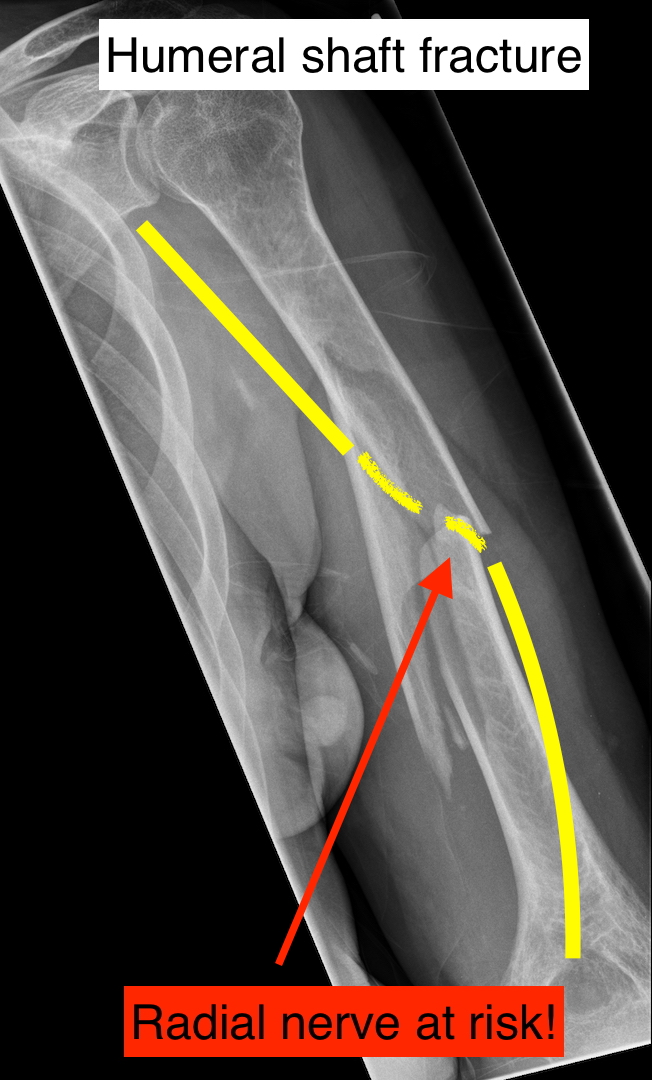Nerves travel in close proximity to the bones and joints. A fracture or dislocation could thus potentially damage a nerve, in addition to the bony injury. As the fracture or dislocation itself is a painful and distressing injury, the presence of a nerve injury may not be recognised immediately.


What are the potential signs of nerve injuries?
- Severe, excruciating, shooting pain which feels like electric shock
- Tingling and/or altered sensation in the injured limb
- Weakness or loss of motor power
- Dry and red skin due to interruption of sympathetic functions
- Tinel’s sign (gently tapping the nerve causes electric shock sensation)
- Laceration or open wound over or near the course of a nerve
- Vascular injury or loss of pulse (as nerve injury can be associated)
Some Common Examples
| Shoulder fracture and/or dislocation |
Axillary nerve |
Loss of deltoid contraction
Numbness over regimental badge
|
| Humerus (Arm) fracture |
Radial nerve |
Wrist drop
Numbness over the back of hand
|
| Supracondylar elbow fracture in children |
Median nerve
(Anterior interrosseous nerve)
|
Loss of thumb and index finger flexion
Inability to make an "OK" sign
|
| Forearm fracture |
Posterior interrosseous nerve |
Fingers and thumb drop (at the knuckles)
Deviated wrist extension
|
| Hip dislocation |
Sciatic nerve
(CPN component)
|
Foot drop
Numbness over the back of foot
|
| Knee dislocation |
Common peroneal nerve |
Foot drop
Numbness over the back of foot
|
Principles of Management (For the Treating Surgeon)
- If a nerve injury is present with an unstable fracture or dislocation, the urgent priority (after life-saving interventions) is reduction and stabilisation of the skeleton.
- When internal fixation of a fracture associated with a nerve injury is performed, in general, the nerve must be explored.
- In high-energy injury, the risk of nerve rupture and thus the need for early repair will be high. Exploration would allow the continuity of the nerve to be established.
British Orthopaedic Association has published useful guidelines with practical advice on the management of peripheral nerve injury.
BOAST 5: Peripheral Nerve Injury
The Management of Nerve Injuries (The Blue Book) BOA 2011